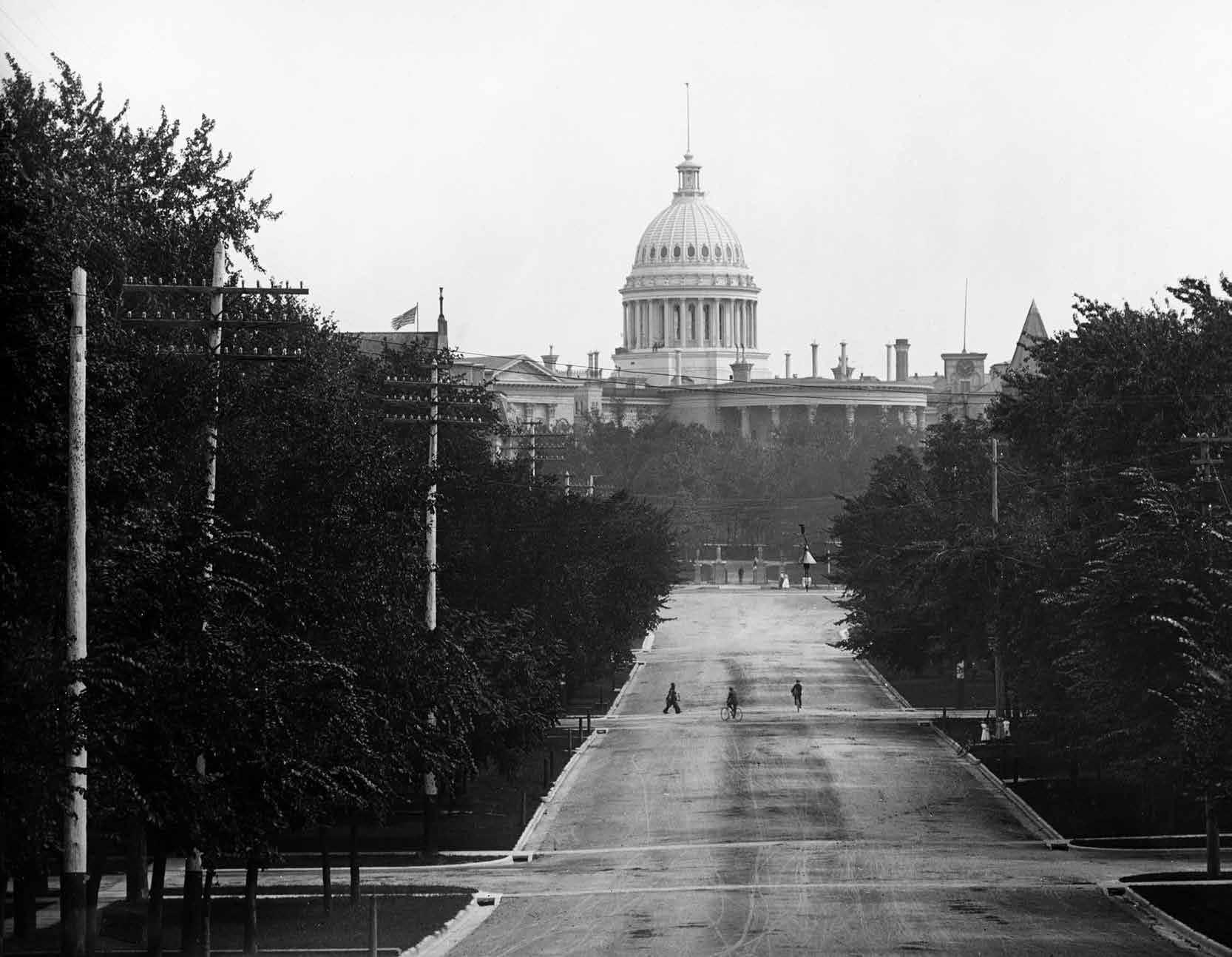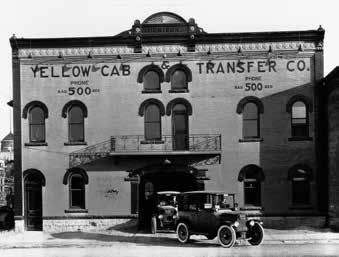On the cover
FRONT COVER: Looking east up State Street from Johnson Street, with the Orpheum and Capitol Theaters on either side of the street, 1939. COURTESY WISCONSIN HISTORICAL SOCIETY / #3151

BACK COVER: The Ingenues, an all-girl band and vaudeville act, serenading the cows in the University of Wisconsin-Madison Dairy Barn in a scientific test of whether the cows would give more milk to the soothing strains of music, 1930. The tallest woman, second from left, is Dorothy Donohoe. Standing behind her is her sister Juel Donohoe, who is mostly obscured by the trombone player.
 COURTESY WISCONSIN HISTORICAL SOCIETY / #2115
COURTESY WISCONSIN HISTORICAL SOCIETY / #2115
Copyright © 2022 by Wisconsin State Journal
All Rights Reserved • ISBN: 978-1-63846-039-8
No part of this book may be reproduced, stored in a retrieval system or transmitted in any form or by any means, electronic, mechanical, photocopying, recording or otherwise, without prior written permission of the copyright owner or the publisher.
Published by Pediment Publishing, a division of The Pediment Group, Inc. • www.pediment.com Printed in Canada.
FOREWORD
Growth and resilience have long been major char acters in Madison’s story.
You can see it today, in the laboratories of the Madison companies making great advances in medical re search. It’s evident in the dining rooms of restaurants that shut down during a crippling pandemic but fought back and now thrive.
It’s a fighting spirit on strong display in the pages of this book detailing the history of Madison from the 1800s through the 1930s.
Growth is apparent, from the advent of the automobile to the construction of the third Capitol building in Madison, built with resolve after fire destroyed the previous Capitol. The majestic building still serves as a beacon of democracy, a symbol representing the open exchange of ideas and a towering welcome to visitors arriving in Madison.
Yet for as much as the city has changed, there are many familiar themes in these pictures.
Arts and culture flourish here. You’ll notice in many of the pictures the Orpheum Theater sign towering over State Street. Built in 1927 for $750,000, the theater was lovingly restored and continues to hosts musicians, comics, lectur ers, and more.
While individual businesses have come and gone, Madison
was—and remains—a vibrant business hub. The community supports local establishments and encourages growth. From dairy to transportation, you can see the innovation and work in these photos. The educational and research opportunities at UW-Madison as well as the city’s entrepreneurial spirit shine, then and now.
As you explore these pages, something else might jump out at you: a sense of community and family.
You’ll recognize some names in the photo captions: Turvill, Brittingham, and Middleton, to name a few. Their family photos show life in Madison more than a century ago. The Middletons were avid photographers, and their pictures allow you to see their sense of wonder for the State Capitol as well as their sense of humor, exemplified by their pet portraits.
You’ll see people at work, revelers enjoying the lakes as they do today and people coming together to celebrate the city’s big moments.
I hope you enjoy this glimpse into the past, and that it gives you an appreciation for the spirit of hard work, innovation and community that persists today.
Kelly Lecker EditorWisconsin State Journal



TRANSPORTATION







ABOVE: Steamboats docked on Lake Monona, circa 1900.

COURTESY WISCONSIN HISTORICAL SOCIETY / #47494

ABOVE RIGHT: Steamboats on Lake Monona, circa 1875. The boat in the foreground is a barge with a sternwheel. The two behind are sidewheel excursion boats.
COURTESY WISCONSIN HISTORICAL SOCIETY / #27189
RIGHT: A horse-drawn carriage on North Carroll Street, circa 1890.
COURTESY LIBRARY OF CONGRESS / #2016794355


RIGHT: Starting to raise “Wisconsin” statue onto the dome of the Wisconsin State Capitol building in July 1914. The gilded bronze statue is by Daniel Chester French and weighs over three tons. This was the fourth state capitol, and the third located in Madison.
 COURTESY WISCONSIN HISTORICAL SOCIETY
COURTESY WISCONSIN HISTORICAL SOCIETY
/ #9566
OPPOSITE: A weighing and measuring campaign being performed at Lincoln School, organized by the Child Welfare Commission and Women’s Commission of the Dane County Council of Defense, 1918.
COURTESY WISCONSIN HISTORICAL SOCIETY / #124865

